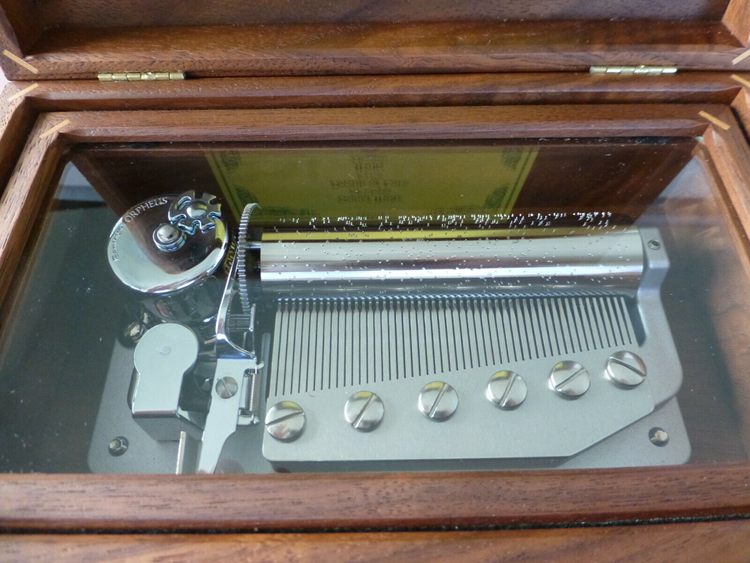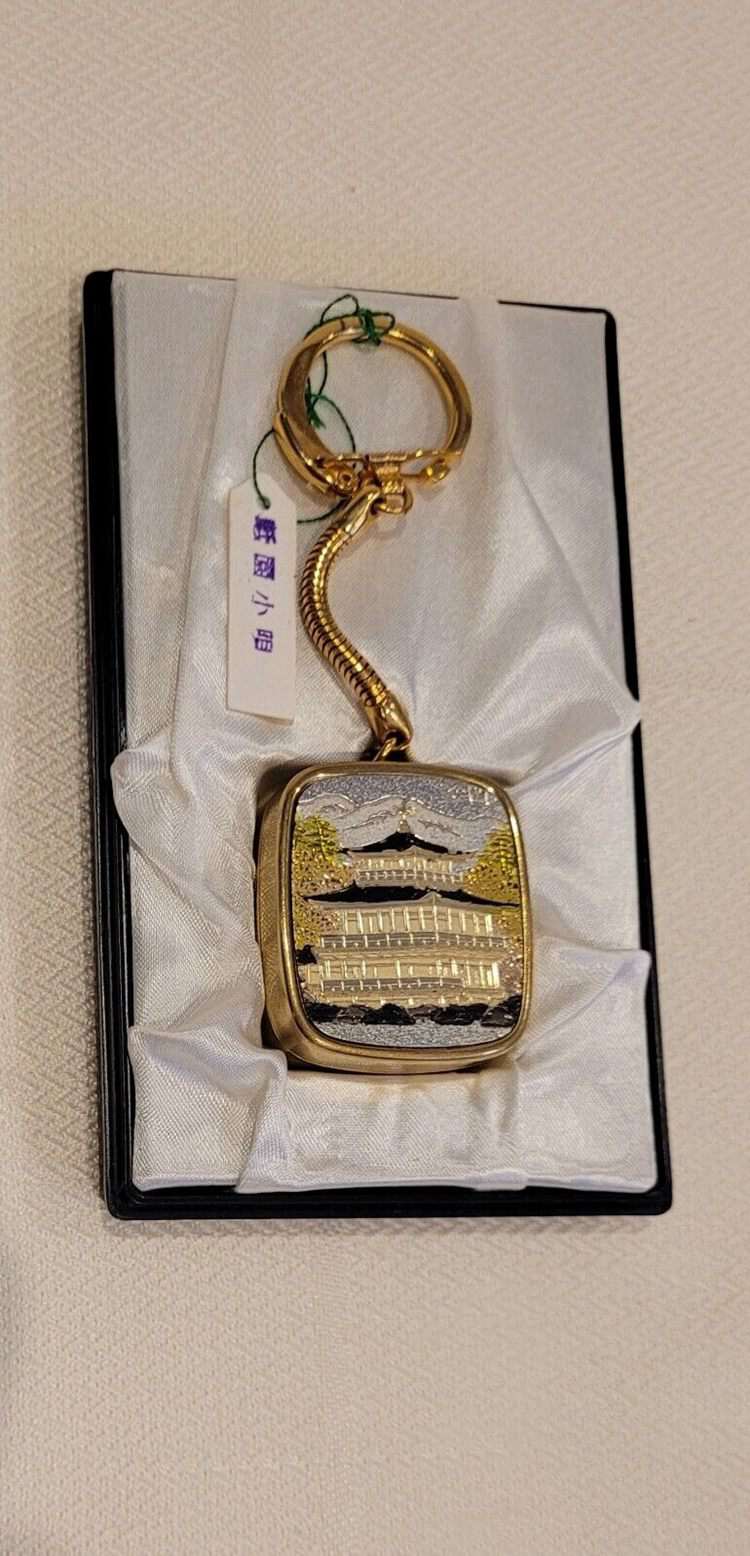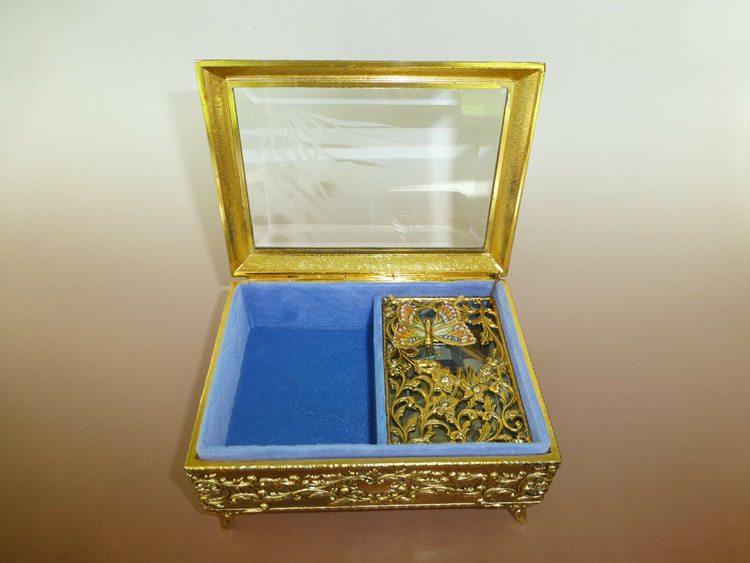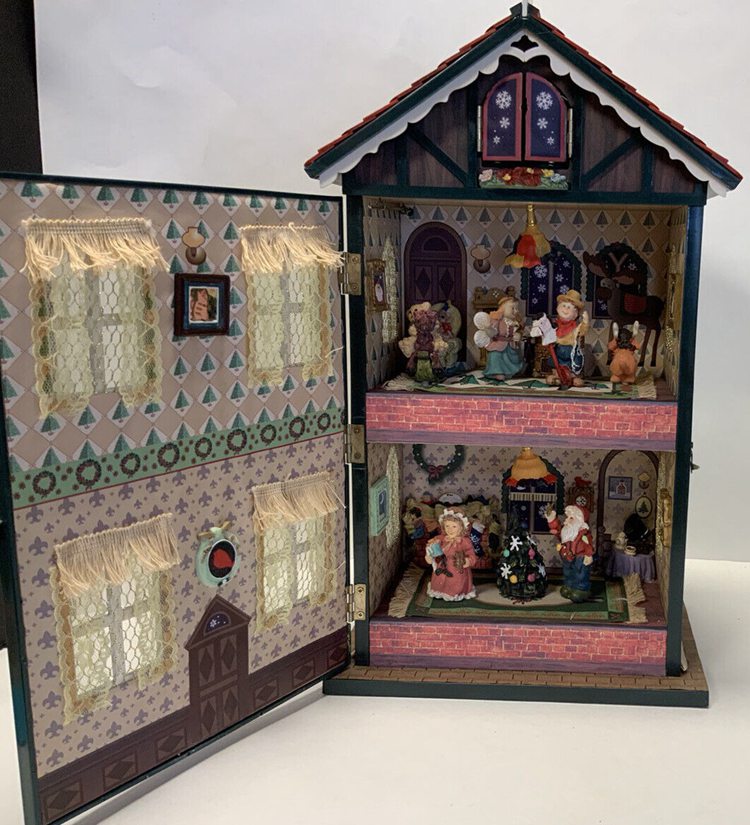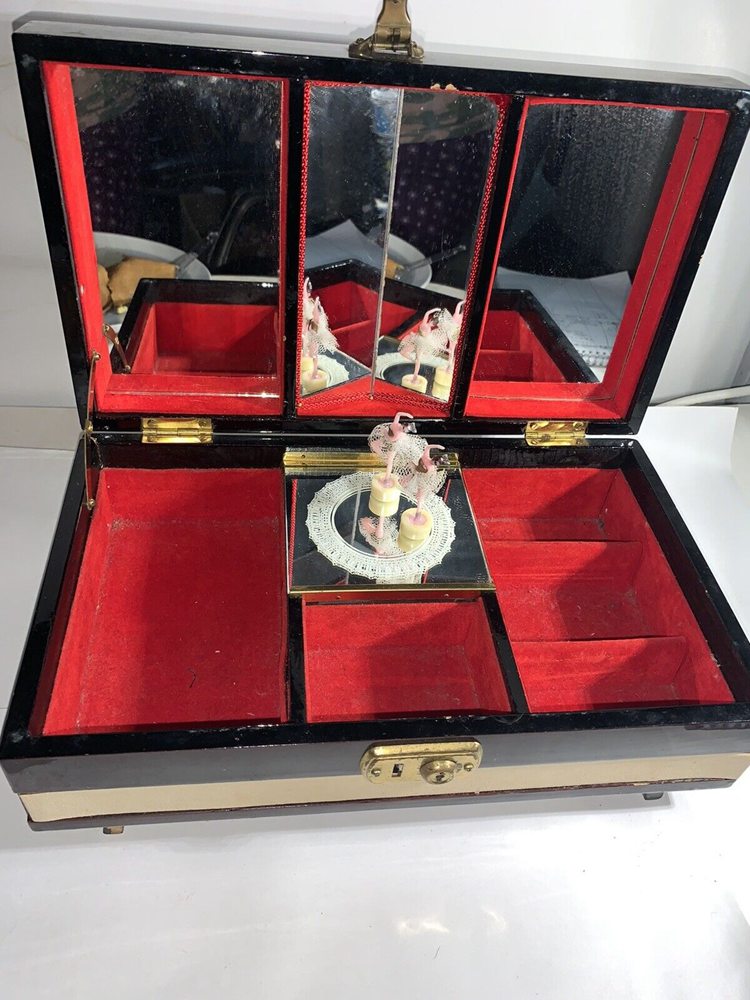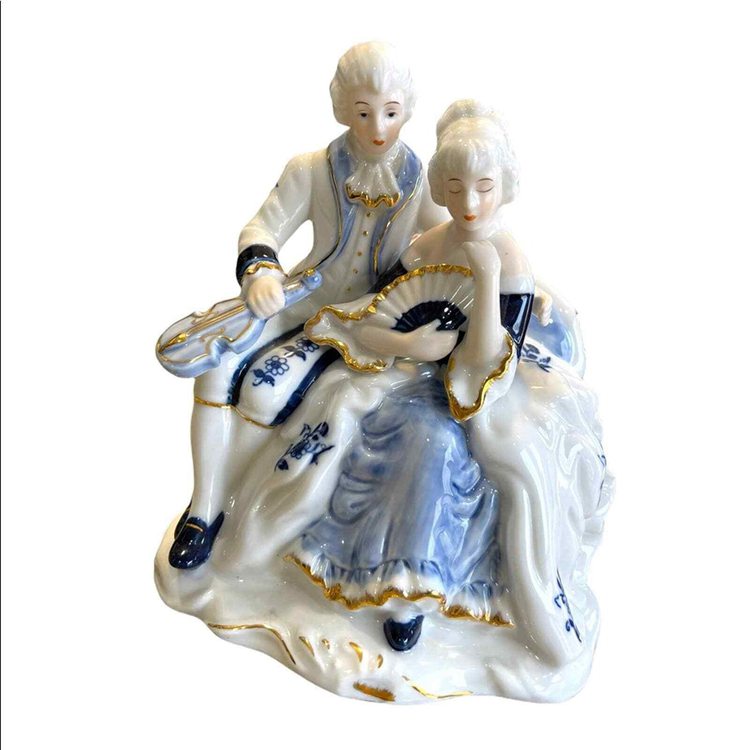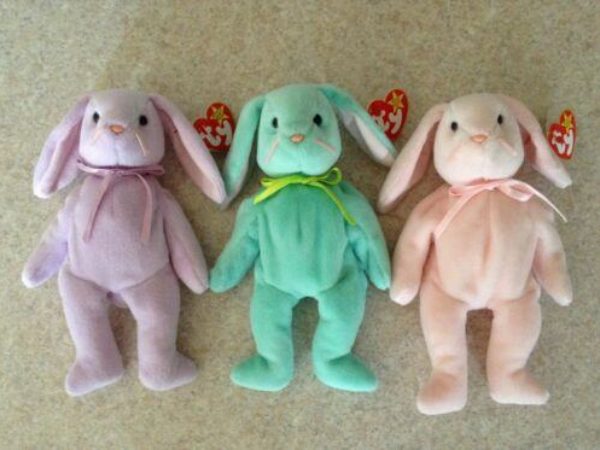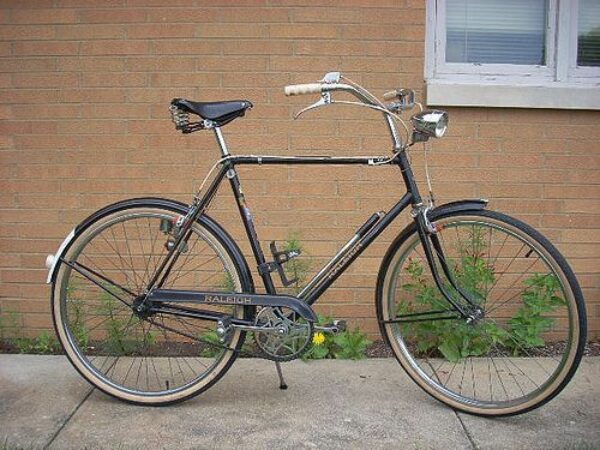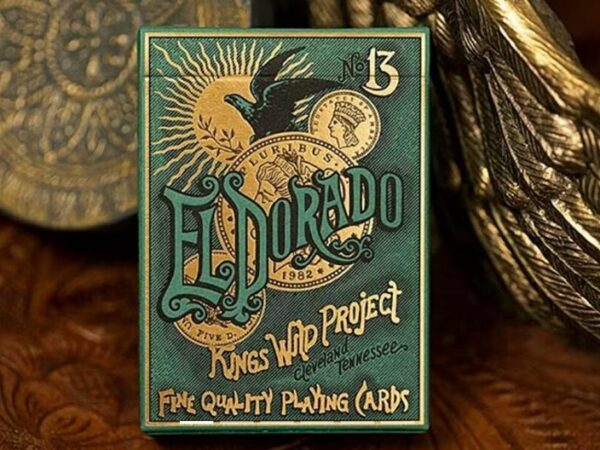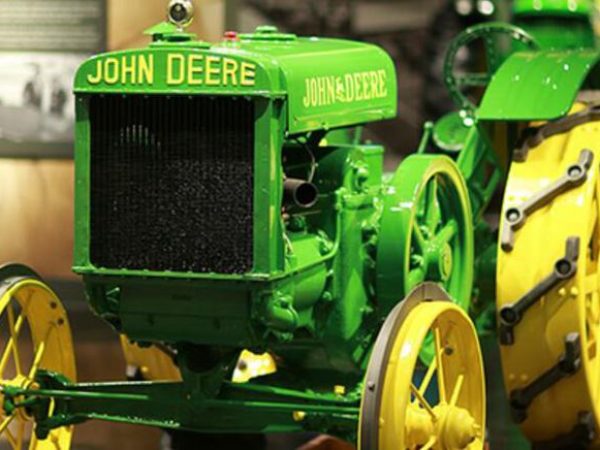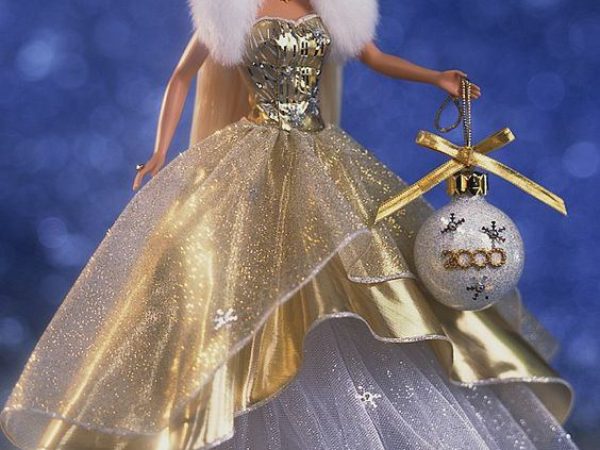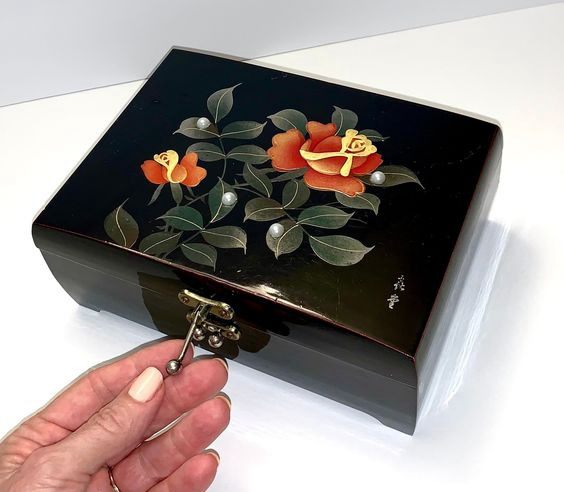
Whatever the style or design, we all have witnessed the humming sound of a music box in our childhood. Music boxes have been present since the 18th century. While some were as small as a watch, others were the size of a dresser.
It is said that the first music box was invented in Switzerland. But, soon, the Japanese music boxes took the market by storm. These vintage items are making a comeback, and collectors repeatedly admire their aesthetics.
Do you catch yourself fascinated by the soft nostalgic tunes of music boxes? Then you’ll be excited to know the history of these little boxes. This comprehensive guide about Japanese music boxes will tell you their market worth, popular styles, and how to collect them.
Table of Contents
What is a Music Box?
You might find a music box self-explanatory, but it has a sophisticated working mechanism behind it. It is a mechanical musical instrument that produces sound with a set of pins. The notes are made when the pins strike the steel comb inside it.
Swiss watchmakers came up with the delicate functioning of the music boxes. The pins are located on the revolving disk or cylinder and touch the metal teeth. These metal teeth are lined up to produce a particular sound. When done in succession, the striking results in melodies and tunes.
The longer pins resulted in lower notes and vice versa. The more complicated machines contained little bells or even small drums to make elaborate tunes.
Manufacturers first made the music boxes the size of a watch, but they became larger with technological advancements. These boxes have been around for more than two centuries. The remnants of these early music boxes are still found in the modern versions.
During the 19th century, the music box artisans kept refining the design to develop more intricate pieces. Today’s boxes have a rich history of tinkering with bells, pins, and gears.
History of Music Boxes
The roots of music boxes go back to the 9th century when the Persian inventors produced the earliest musical instrument. It was a hydro-powered mechanical organ with interchangeable cylinders.
Since then, music boxes have come a long way with modern ones hosting extreme features and advancements.
In the early 13th century, a bell ringer in Flanders invented a cylinder fitted with pins. The pins operated the cams, which in turn hit the bells. Nicholas Vallin, a Flemish clockmaker, produced a wall clock with the pinned barrel in 1598. This barrel was mounted on a superstructure playing bells with multiple tunes. He programmed the barrel to locate the pins separately in the holes of the barrel.
The concept of music boxes traveled to England in 1665 when Ahasuerus Fromanteel made a musical table clock. The London-based inventor used the pinned barrel connected with multiple bells. The change of bells produced different tunes.
In 1772, steel prongs were used for making music. Ransonet in France developed a watch that employed tuned vertical prongs and a pinned drum to create tunes. A metallic comb replaced the bells in 1796. In Geneva, the clockmaker Antoine Favre-Salomon used pre-tuned notes to produce more complex sounds. He placed the barrel horizontally and reduced the space. They were one of the first music boxes and are still displayed at the “Shanghai Gallery of Antique Music Boxes and Automata.”
The invention of the phonograph by Thomas Edison in 1877 also impacted music box production. The phonograph evolved into the gramophone, the earliest sound reproduction machine.
After the phonograph, artisans produced the music boxes massively. The Swiss watchmakers started the trend, and it quickly spread around Europe. The Music boxes at this time were made functional by adding drawers and locks. Most of these pieces were used as jewelry boxes by women. The U.S.A adopted the music boxes from the European region and expanded their designs and shape.
History and Identification of Japanese Music Boxes
The music trend in a box traveled from the West to the East in the early 20th century. The Asian regions, especially Japan, acquired the technology, adding more complexity to the functioning. Soon, the Japanese music boxes became most popular around the world.
Japan started producing music boxes after World War II based on Swiss mechanisms. Sankyo Seiki came forward with its mechanism and became the well-established name for music boxes. In fact, Sankyo’s name started becoming one with those of premium quality music boxes all over Japan.
Sankyo Music Box History
Sankyo Seiki (now known as Nidec Sankyo Corporation) started its operations in 1946. Established in Suwa, Japan, the company produced its first music box in 1948.
The first six sets of Sankyo Japan music boxes were produced as an experiment playing “Hanschen Klein.” However, the sets were unsuccessful as their teeth broke one after the other. The remaining groups could not produce a high-quality sound and felt like the sound of striking the bucket.
At the end of 1948, Sankyo was able to ship its first set of 500 music boxes. Later, Sankyo music boxes were used worldwide, making up almost 90% of the music box industry. Therefore, vintage Sankyo music box is still in demand and available in the antique market.
Music boxes continue to evolve today, but Sankyo pieces are still considered valuable. Sankyo also produces their luxury music box series ”Orpheus” using a needling technology. It can play multiple tracks and a long song.
Types of Japanese Music Boxes
Music boxes have undergone many evolutionary changes until today, but Japanese music box still tops the list of collectibles.
Following are some popular designs of Japanese music boxes
Reuge Boxes
Reuge music boxes are named after Charles Reuge, who invented them in 1865. The popular design from the Swiss mountains made its way to Japan. The Reuge music box is made from the finest woods, which sets it apart from its counterparts.
The two variations of Reuge boxes are available: The studio and lounge boxes. Both are highly decorative and come in all sizes. You can use them as a piece of furniture to a pocket watch as they truly master the art of mechanical tunes.
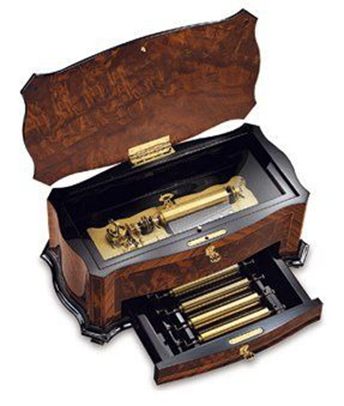
Cylindrical Music Box
Cylinder music boxes were the most popular boxes in the nineteenth century. They are also a common sight in the vintage market today.
A rotating cylinder produces the music in these boxes with pins plucking on a steel prong. The prongs of the comb, in turn, make sounds at various frequencies. The cylinder rotates with the help of a spring motor attached to a ratchet lever.
Cylinder music boxes can play music from a few seconds to an hour. However, these boxes can only play one programmed melody inserted during manufacture. You can buy and sell these boxes online at affordable rates.
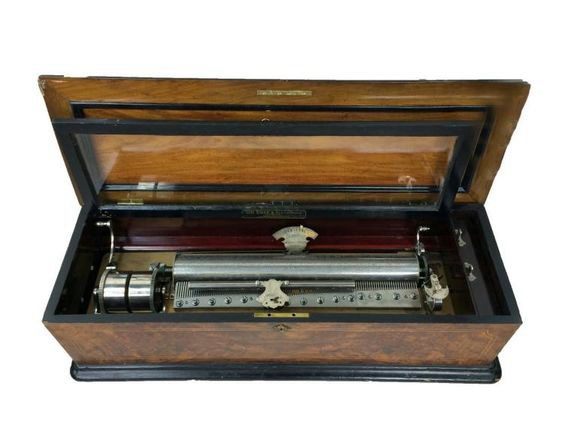
Disc Music Box
The disc music box was first invented in Germany and is similar to the phonograph. Disc box is cheaper than the Reuge or other boxes, but it can play different melodies.
Unlike the pre-programmed tune, people could change the discs to play any song. The disc production increased after this invention which took over the whole world.
However, the disc music boxes quickly faded from the scene when phonographs and pianos appeared. The mass production of phonographs eventually wiped out disc music boxes.
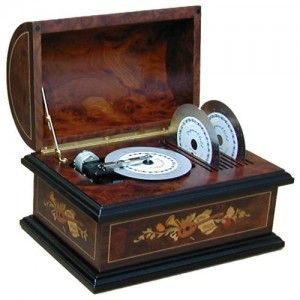
Sankyo Seiki Music Box Styles
Almost 90% of the music boxes in the market are Sankyo Seiki. Due to the sheer abundance of these pieces, every vintage music box collector is bound to come across a Sankyo Seiki article.
You can find Sankyo boxes both online and in antique shops. These music boxes are available in numerous styles, from ceramic to wood and engraved to plain.
Sankyo boxes are also exquisitely crafted and functional. They are usually used as toys and jewelry boxes. Moreover, Sankyo music boxes have exclusive tunes, which makes them highly collectible.
Some common styles of vintage Sankyo Seiki music boxes are:
Wooden Rectangular Boxes
These boxes were one of the most popular articles in Sankyo’s 20th-century productions. The rectangular box was often painted with minimal designs and lacquered. The finish of these boxes was top-notch, which is retained even today.
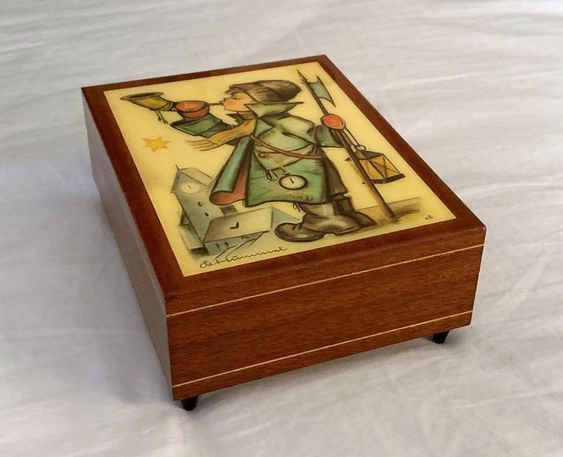
Pentagon Music Boxes
The pentangular boxes were five-sided music boxes often attached with removable trays. The most common material was painted brass or silver with soft colors. You can also find these boxes featuring delicate motifs. The carving was usually done on a flat wood panel raised slightly from the background.
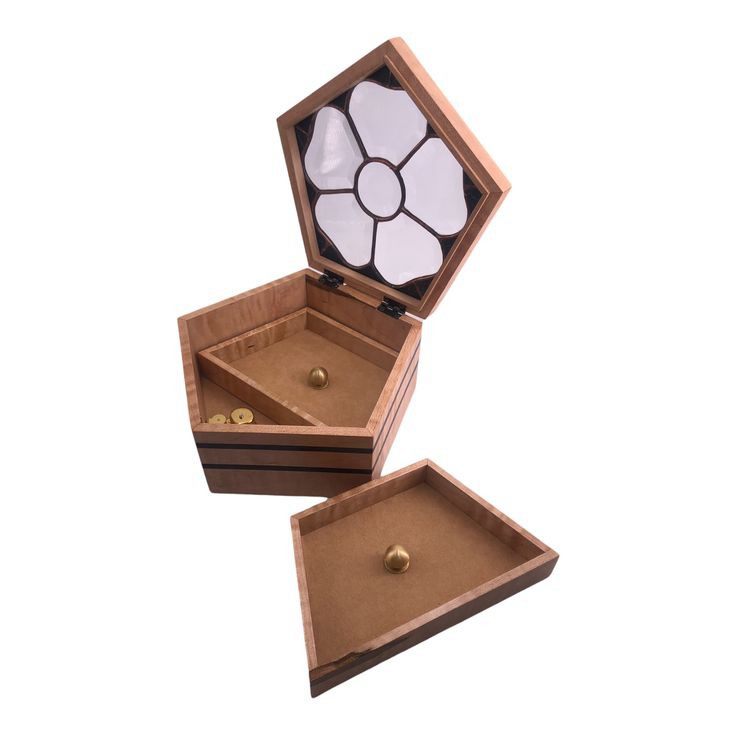
Music Boxes With Porcelain Figurines
Sankyo introduced a unique style of a music box with its porcelain figurines. The ceramic material was molded to form unusual figures which looked like decorative items. You can wind these pieces to release a tune.
Porcelain figurines by the company were a hit and are still adored by collectors.
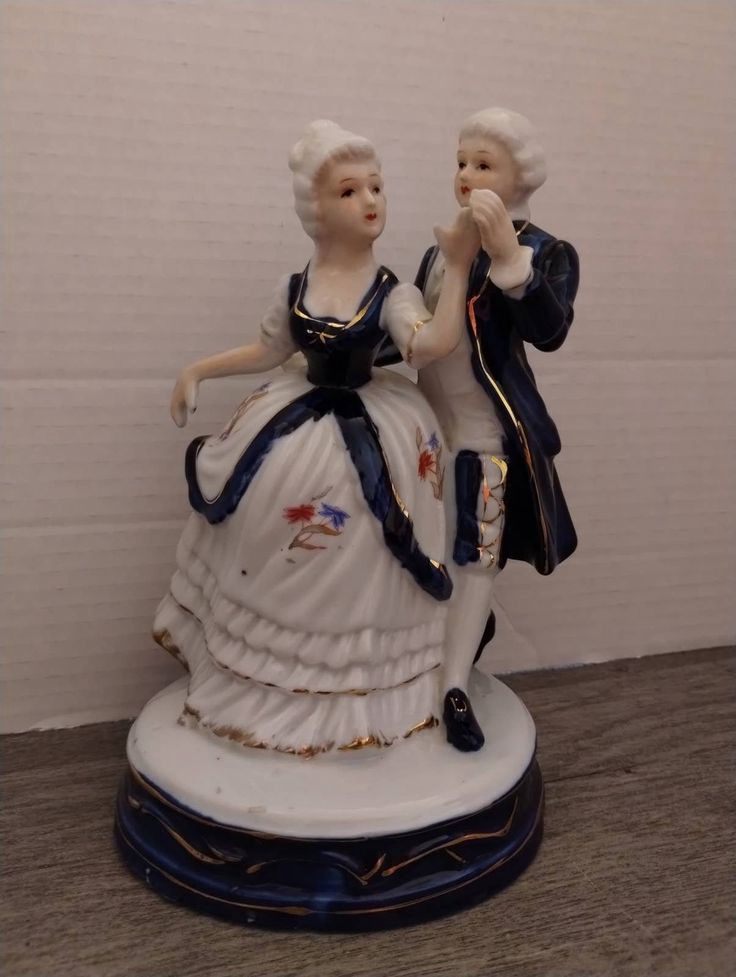
Piano-Shaped Sankyo Music Boxes
As the name indicates, Sankyo built these music boxes in the shape of a piano. Piano-shaped boxes are harder to find today as the company took a unique approach to design them.
The brand produced both metal and wood versions of the piano-shaped boxes. You’ll be lucky if you can still find these vintage pieces somewhere.
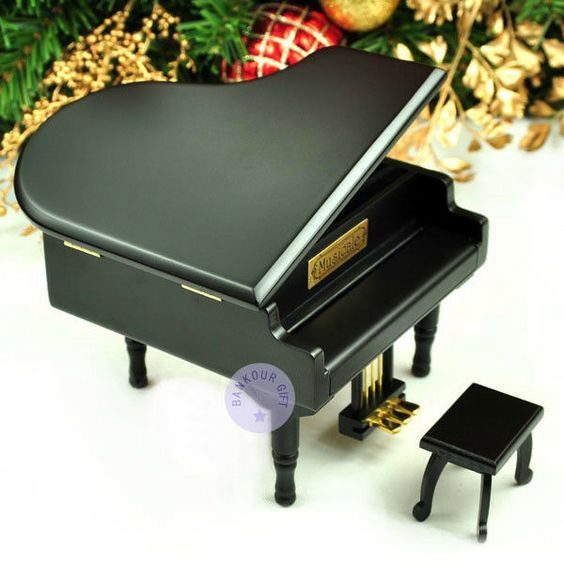
Keychain Music Boxes
Sankyo also launched music boxes with miniature keychain designs. They also incorporated all sorts of structures on the faces of small boxes.
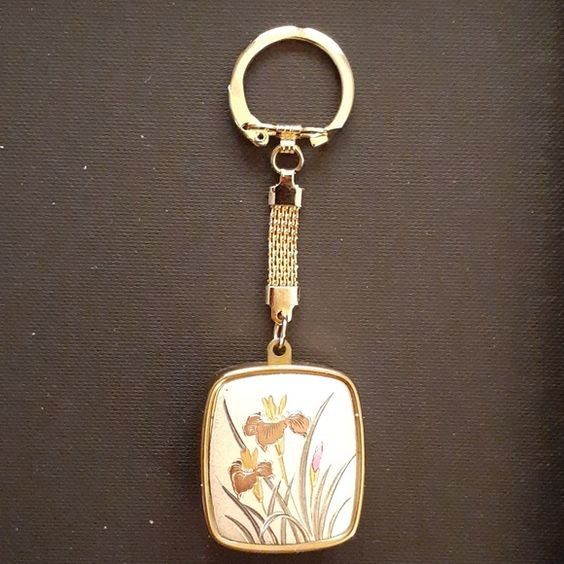
Sankyo Japan Music Box Value
The delicate, beautiful, intricately adorned Sankyo music boxes aren’t difficult to seek in antique shops and online. Also, the affordable rates of these vintage boxes make them a perfect housewarming gift.
You can easily find a fully functional Sankyo music box for somewhere between $15 to $30. For instance, take a look at these eBay listings:
- Vintage Sankyo Photo keychain music box for $25
- Sankyo gold-tonedenamel box chain for $18.
However, the price of some rare music boxes might go as high as $1000. Although you can land a good deal for yourself at cheap rates, here are a few factors that might impact the value of a Sankyo music box
Condition of the Music Box
Like all vintage items, the product’s condition determines its final value. If the music box is in excellent condition, it will be worth more. The box’s value also increases if it has original packing or associated key.
For instance, this Japanese black lacquer music box in excellent condition is listed on Etsy for $85.
Rarity
The rare pieces are the ones that are produced for a limited time. The item is also considered rare if its demand exceeds its supply. The rare music box designs are valuable in the market, and collectors are willing to pay more price for them.
For example, this rare Sankyo vintage music box is listed on eBay for $249.
Style and Design
Most of the music boxes by Sankyo were plain with basic designs. However, some pieces, such as black lacquer music boxes, were ornated beautifully with secret drawers. These items were specially made to cater to wealthy and royal families.
The price of these boxes is much more than regular music boxes. This clover keychain music box listing with gold detailing is $39.95 on eBay.
Working Mechanism
Although most music boxes are fully functional, you can find items with flaws in their working mechanism. Due to the lack of full functionality, these items are available at cheaper rates.
For instance, this Sankyo wood music box in used condition is listed on eBay for only $5.
Valuable Sankyo Japanese Music Boxes
Waltz Playing Sankyo Music Box
This Sankyo rectangular wooden music box is estimated to be produced in the early 1950s. The music box plays three tunes: Dream of Love, Waltz (J. Brahms), and Grand Waltz (F.F. Chopin). If you get this box in excellent condition, it can be valued at more than $1000.
You can find this vintage box on eBay here.
Sankyo Keychain Music Box
The keychain music box with original packing ranges from $70 to $100. This Temple of the Golden Pavillion keychain music box was manufactured in 1970. It is listed on eBay for $75 in excellent condition.
Butterfly Music Box
The butterfly music box by Sankyo was manufactured in the 1960s. The enamel box produces music along with the flapping of butterfly wings. This gold-tone music box with blue velvet in excellent condition is around $500. You can find it on eBay here.
Sankyo Santa Claus Music Box
Santa Claus figurines music box plays “Coming to Town.” It is a house-shaped music box with small figurines relating to Christmas. The figures move into a fully functional music box, and the doors open. It is valued at $150 and can be found on eBay.
Sankyo Lacquer Jewelry Box
The lacquer jewelry boxes by Sankyo are still in demand. Some of these pieces are rare and valuable. Collectors admire this vintage music box with ballerinas and red velvet lining.
With full functioning and excellent condition, the lacquer jewelry box is priced at $189. You can see the eBay listing here.
Porcelain Figurine Couple Statue Music Box
The porcelain figurines’ music boxes by Sankyo are pretty popular. The music box can be valued at around $100 If the ceramic material does not show signs of wear and the box is functional. This couple statue music box is priced at $79 on eBay.
How to Repair a Sankyo Music Box?
As I have discussed earlier, the value of a music box will decrease if it is not fully functional. But, you can repair a music box before selling it, enhancing its market value.
Although this comes under restoration and can work wonders if done right, the converse is also true. You need to be extremely careful when restoring an antique music box. These are delicate, fragile items and their old age doesn’t help with that!
Even the smallest dent or seemingly insignificant damage to the object can completely tank its overall price! As such, it’s better to leave the repair and restoration process to either a professional, or doing it yourself if and only if you can do it without compromising upon the item’s integrity.
Here is a complete video guide on repairing a Sankyo Japanese music box.
Final Words
Since the inception of music boxes, they have gone through multiple transitions and technological advancements. However, Japanese music boxes have continually stayed on the top. Sankyo Seiki shared nearly 90% of all the music box production.
Sankyo provided versatility. The company produced nearly every style and design, from dancing figurines to jewelry boxes. Some common ones include wooden rectangular, pentagonal, porcelain figures, and keychains.
The good news is that the abundance of these music boxes has rendered them affordable in the antique market. You can easily find a Sankyo piece online or at your local store. However, some rare music boxes in excellent working condition might sell for more rates.
